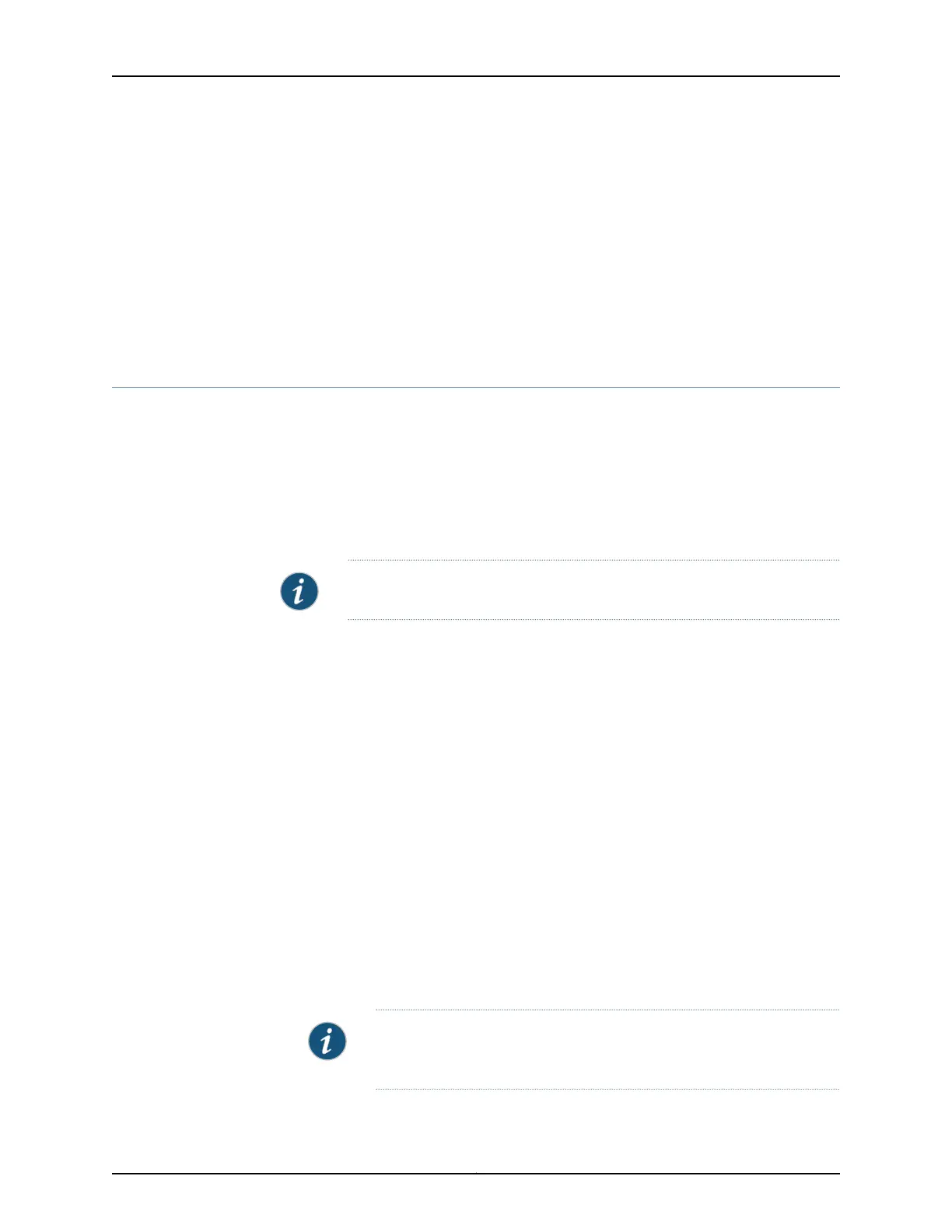• Configuring Q-in-Q Tunneling on ACX Series on page 771
• Configuring VLAN Identifiers for Bridge Domains in ACX Series on page 764
• Disabling MAC Learning for Bridge Domains on ACX Series on page 765
• Configuring Static MAC Addresses for Logical Interfaces in a Bridge Domain in ACX
Series on page 766
• Configuring the Size of the MAC Address Table for Bridge Domains in ACX Series on
page 766
Configuring Integrated Routing and Bridging in ACX Series
Integrated routing and bridging (IRB) provides simultaneous support for Layer 2 bridging
and Layer 3 routing on the same interface. IRB enables you to route packets to another
routed interface or to another bridge domain that has an IRB interface configured. You
configure a logical routing interface by including the irb statement at the [edit interfaces]
hierarchy level and include that interface in the bridge domain. For more information
about how to configure a routing interface, see the Junos OS Network Interfaces Library
for Routing Devices.
NOTE: You can include only one routing interface in a bridge domain.
The following are the list of features supported for IRB:
•
Family inet, inet6, and iso are supported on an IRB interface.
•
Routing protocols supported on an IRB interface are BGP, ISIS, OSPF, RIP, IGMP, and
PIM.
•
DHCP Relay with option 82 is supported on an IRB interface.
•
IRB can be added in a VRF routing instance.
•
VRRP is supported on an IRB inteface.
•
Bidirectional Forwarding Detection (BFD) protocol is supported on an IRB interface.
•
The following Class-of-Service configurations are supported on an IRB interface:
•
The IRB classifiers and rewrite on routed packets.
•
Fixed classifier can be applied on an IRB logical interface.
•
Firewall filters (multifield filter) can be used to assign forwarding class and loss
priority. You should define a family inet or inet6 filter and apply it as the input filter
on an IRB logical interface under family inet.
NOTE: physical-interface-filter is not supported for family inet6 filter on
IRB logical interface.
761Copyright © 2017, Juniper Networks, Inc.
Chapter 24: Configuring Layer 2 Bridging and Q-in-Q Tunneling

